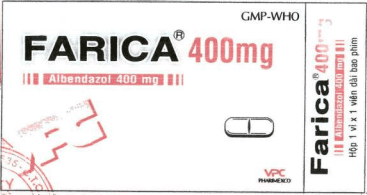This is an automatically translated article.
Caper medicinal plant is a species of plant in the Caperaceae family with many different uses for health. So what is the Caper medicinal plant and how does it work?
1. What is Caper's medicinal plant?
What is Caper's medicinal plant? Caper's medicinal plant has the scientific name Capparis spinosa L, belonging to the family Capparaceae (capsule). It is a perennial dicotyledonous shrub found throughout the Mediterranean countries of Europe, Asia and North Africa. Caper's preferred climate is hot and dry with intense sunlight. This plant is used to prevent erosion, because the roots grow up to 3m deep in the ground, and because of its salt tolerance, the Caper medicinal plant grows easily along the coasts in mangrove areas.
From mid-April to the end of September, the Caper medicinal plant can grow to a height of 1-1.5m, canopy 2-3m wide, white flower buds up to 7.6cm wide. If not harvested, the buds of the Caper medicinal plant will flower and produce a round berry (caperberry).
The Caper medicinal plant has a long history of being used as a culinary spice and is still widely used today. Archaeological finds in China show that Caper was used as medicine by people.
In ancient Greece, the medicinal plant Caper was used as a remedy for flatulence, while the records of the Hindu system of medicine show that the medicinal plant Caper was used to improve liver function. In addition, the medicinal plant Caper has also been used for other purposes such as treating arteriosclerosis, diuretic, kidney disinfection, deworming and tonic.
The unopened flower buds of the Caper medicinal plant are hand-picked, then soaked to create a characteristic pungent taste. The young leaves of the Caper medicinal plant are also used as a vegetable or prepared into salads or fish dishes. Caper berries are used to make sauces or pickles.
Characteristic flavor of Caper medicinal plant to Methyl isothiocyanate composition. The seeds of the Caper medicinal plant have traditionally been used to soak alcohol and treat toothaches, while the root bark extract is used to treat coughs, asthma, arthritis, gout, ascites, paralysis, and anemia. , spleen and skin dysfunction. Caper's roots are burned and the ash is used as a salt.
2. Chemical composition of the drug Capers
Extract of dried whole Caper medicinal plant containing Flavonoid rutin, Kaempferol-3-glucoside, Kaempferol-3-rutinoside and Kaempferol-3-rhamnoside. Other ingredients include Quercetin 3-O-glucoside, Quercetin 3-O-glucoside-7-O-rhamnoside, Quercetin 3-O-(6-alpha-L-rhamnosyl-6-beta-D-glucosyl)-beta -D-glucoside and two 6-S-hydroxy-3-oxo-alpha-ionol glucoside moieties.
An article reports on the anti-inflammatory activity of polyprenol cappa-prenol-13.
Compounds identified in the medicinal plant Caper include ursolic acid, coumaric acid, nicotinamide, sitosterol, cadabicine and stachydrine.
The mature fruit of the medicinal plant Caper contains an indole acetonitrile and various glucosides. Seed oil contains the fatty acids linoleic and oleic acids, sterols and tocopherol.
3. What is Caper's medicinal plant?
Antibacterial: Butanolic extracted from the medicinal plant Caper has higher activity against bacteria than other extracts in in vitro experiments. However, no clinical studies have been performed and no comparison has been made between Caper's medicinal plant and identified antibacterial agents.
Antioxidants: The methanol extract of the flower buds of the Caper medicinal plant has been evaluated for its antioxidant effects. Inhibition of lipid oxidation has been demonstrated experimentally. The mechanism of this effect is due to the supportive interaction between the chemical components Tocopherol, Flavonoid and Isothiocyanate.
Hepatoprotective: p-Methoxy-benzoic acid from Caper medicinal plant extract has the ability to protect against hepatotoxic agents in experiments in rats. Similarly, a clinical trial investigating the effectiveness of a mixed preparation containing Caper's medicinal plant extract in combination with other extracts showed an improvement in liver function test results.
Hypoglycaemia: Experiments on diabetic rats showed that Caper medicinal plant has a hypoglycemic effect. A double-blind, randomized, placebo-controlled trial in 60 adults (Iran) investigated the hypoglycemic effects of Caper's medicinal fruit extract (mean 1,200 mg/day, equivalent to with 5g/day capers). Participants were patients with type 2 diabetes who had been stabilized for 2 months with appropriate nutrition and medication prior to the start of the study. After 2 months of treatment, users of the Caper medicinal plant extract showed a significant improvement in the fasting glycemic index
Lowering blood lipids: In normal and diabetic rats given the extract Caper medicinal plant fruit for a period of 2 weeks, resulted in a reduction in plasma cholesterol and triglyceride concentrations.
Immunity: 2% methanol solution extracted from Caper medicinal plant in hand sanitizer gel has the ability to inhibit erythema caused by histamine. The chondrocyte protective effect of the medicinal plant Caper has been demonstrated experimentally and may be due to the activation of an immune response.
4. Side effects of the medicinal plant Caper
The application of wet gauze soaked in water containing Caper's medicinal plant buds has been associated with the development of contact dermatitis.
Allergy to Caper berries and buds was confirmed by skin prick tests in a 22-year-old man after he presented to the emergency department with angioedema of the face and hands, rash, and pressure. car.
Hope the information in the above article has helped you understand the basics of the ingredients, as well as the uses of this medicinal plant. However, the use at the present time does not have many specific studies proving it. Therefore, to ensure safety, patients should only use it with the advice and specific instructions of a doctor. Do not arbitrarily use or prepare to avoid the risk of side effects and serious health effects.
Follow Vinmec International General Hospital website to get more health, nutrition and beauty information to protect the health of yourself and your loved ones in your family.
Reference sources: drugs.com, holevn.org













